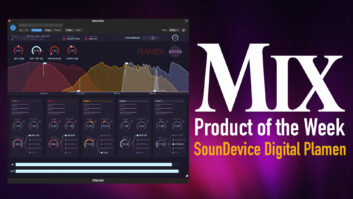
New York, NY (October 21, 2024)—When choosing a reverb plug-in, one factor to consider, in addition to sound quality, is the creative capacity of its controls. The recently released Biverb from SounDevice Digital (distributed by United Plugins) provides a selection of quality reverb algorithms and lets you deploy them via two separate reverb engines.
The two processors, Reverb 1 and Reverb 2, can be independently set to Hall, Plate, Room, Spring, Chamber or Shimmer algorithms. Both have their own controls for Predelay, Gain, Size, Color, Panorama, Damp Low, and Damp High.
Reverb 1 and Reverb 2 also have independent modulation and ducking controls. The latter lowers the wet signal by an adjustable amount when a dry signal is detected at the input, helping to keep reverb wash from muddying up the transients.
Each engine is powerful on its own, but Biverb’s creative capabilities come from combining their two outputs using one of four modes:
Left/Right mode: Reverb 1 goes to the left channel, and Reverb 2 to the right. You can set the two engines identically for a conventional reverb sound or differently to create wide stereo effects.
Mid/Side mode: M/S functionality isn’t usually found in reverb processors. In this mode, Biverb allows you to apply one reverb to the sides of the signal and another to the center.
Low/High mode: A user-adjustable crossover lets you set a frequency that splits the signal to Reverb 1 and Reverb 2. For example, if you wanted to apply reverb to a stereo drum mix but wanted less reverb on the kick, you could use Low/High mode with the Crossover set to about 300Hz and the decay and gain parameters set lower on Reverb 1.
Quiet/Loud mode: When selected, you can set a loudness crossover point (in decibels) to determine which part of the signal gets applied to each engine. One example of how it could be handy would be on a vocal track with a wide dynamic range, where you wanted a slightly different reverb only on the loudest notes.
Biverb features global controls for Wet, Dry and Output. It also offers 64-bit processing, a freely resizable GUI, a preset browser with separate categories for different source types, and a collection of factory presets. An A/B function allows you to compare two different settings quickly.
Spike AI — A Mix Product of the Week
Biverb is temporarily available for $16, an astounding 81% introductory discount from its regular price of $86. Find out more at the United Plugins website, where you can also download a 15-day, fully functional free trial.







